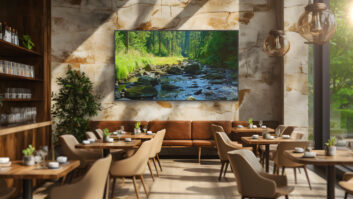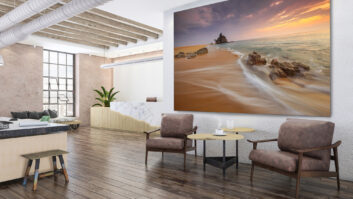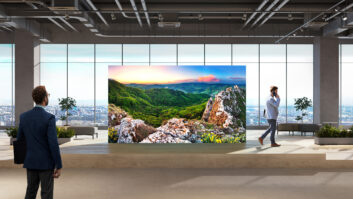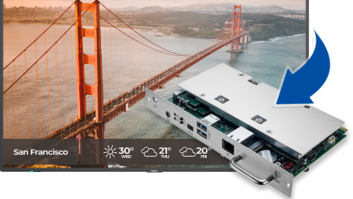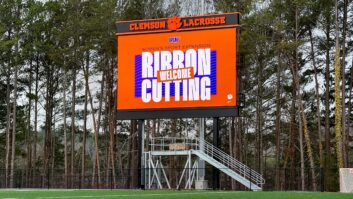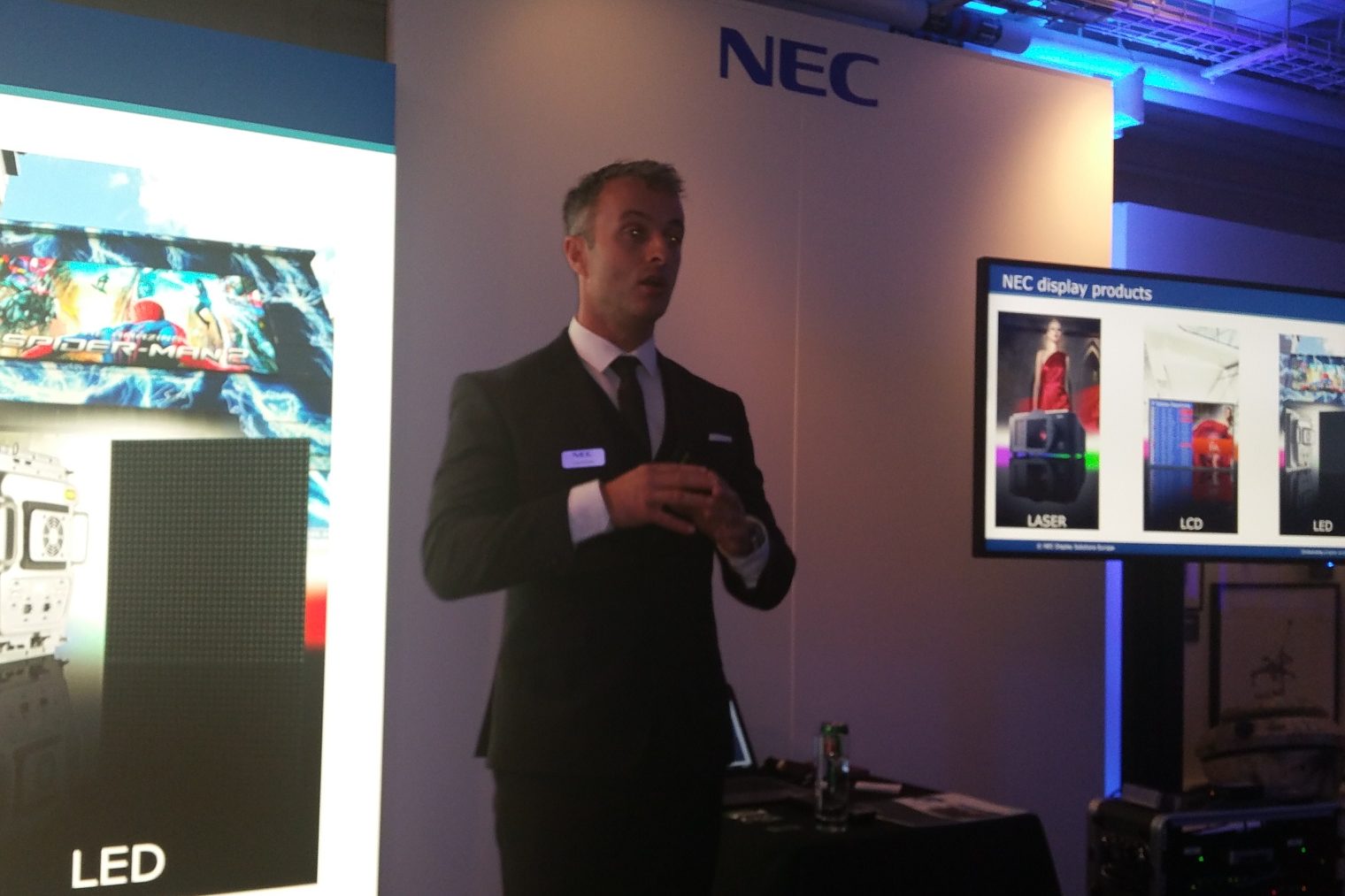
Last week NEC Display Solutions showed off its next generation of large-format displays for the first time in the UK. The presentation, which also highlighted the company’s newly announced co-operation with Raspberry Pi, held at the Bond in Motion exhibition in London’s Covent Garden.
NEC currently has seven different series in its LFD range. In broad terms, these increase in running hours, brightness, functionality and price as one moves up the range. The series are E (entry-level), V (value), XS (specialised), P (professional), XUN (ultra-narrow, for videowalls), XHB (high brightness) and XUHD (reference).
Craig McQueen (pictured), solutions sales manager at NEC Display Solutions Europe, explained that the XS series will be end-of-lined in 2017; the V series will “move up a category”, and a new C (“commercial”) series will be introduced between E and V. The C series is designed for 16 hours’ operation per day, has brightness of 400cd/sqm and accepts 4K60 signals.
New versions of nearly all of the other ranges will be released during 2017. Across the board, the displays have been made thinner, with the bezel now almost flush with the display surface (and available in coloured versions). The NEC logo is relocatable (for instance, in portrait deployments) or can be removed completely. On the rear of the displays, new features include fixing points for soundbars, and two screw holes near the top to mount a camera shelf. Additionally, the OPS slot has been centred.
Screen reflectivity, which had been an issue at larger sizes, has been addressed, said McQueen: a new anti-reflective coating is to be used on the V series upwards.
Turning to software and connectivity: according to McQueen, a key drawback of the SoC model used by some competitors is that the chip is not upgradeable over the lifetime of the display or replaceable in the event of failure; so NEC has always favoured slot-in PCs. As Installation reported recently, the manufacturer has co-operated with Raspberry Pi, to enable the integration of its devices within NEC displays. This platform, said McQueen, is low-cost, modular, upgradeable, open, and supported by a development body that operates in 132 countries.
Adam Wilson, co-founder and director at Intevi, then demonstrated an IPTV system that his company had developed for the Raspberry Pi in just four weeks. This enables users to deliver fullscreen TV, add widgets (such as travel and weather information), play stored videos, and schedule content.
McQueen closed the presentation by offering an overview of NEC’s InfinityBoard, a huddle space solution that will be launched at ISE. This will launch in 65in and 84in versions, equipped with Flatfrog touch technology, a single, 120º PTZ camera, a wireless presenting tool and the company’s Reactiv software for document sharing and annotation. He added that NEC is working with DisplayNote on collaboration software.

